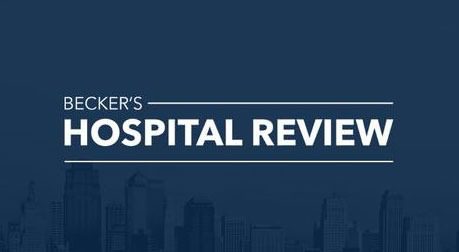
The investment driving millions in savings for WVU Medicine – Becker’s Hospital Review | Healthcare News
As WVU Medicine has grown from seven hospitals to 25 in the last six years, Todd Karpinski, PharmD, vice president and chief pharmacy officer, said the health system has found itself confronting the challenge of managing drug shortages on a large scale.
This need prompted the health system to open a centralized pharmacy warehouse, playing a large role in reducing drug shortages, streamlining logistics and cutting costs. The warehouse, located inside a former Mylan pharmaceutical plant in Morgantown, W.Va., spans 25,000 square feet and functions as a hub for purchasing and inventory.
“We really began to see the need for a centralized pharmacy location to help us deal with drug shortages across the system including inventory management, expiring of medications and then really just space in each of our hospitals,” Dr. Karpinski said. “We really just didn’t have any space for redundant stock.”
Centralizing to save
Initially approved for 20,000 square feet, the facility has since been expanded to focus more on minimizing deficiencies, especially in ambulatory settings.
“In the past, clinics have ordered on their own, and maybe they only need like 10 of one thing, but it comes as 100 so they have to order 100,” Dr. Karpinski said. “Now, with the warehouse, they can order by unit. So if they only need three, they can order three and that reduces their inventory and reduces expiration.”
As a result, he said there has been a large return on investment as a result of the Morgantown-based health system pouring $5.5 million into the warehouse.
“We’re predicting about $620,000 savings on drug shortages this year,” he said. “We are expecting a savings of about a million and a half by ordering for the clinics and our repackaging, we’re anticipating about $400,000 of savings, and then we have some other savings spread out.”
Altogether, WVU Medicine has projected the facility will pay for itself in a little less than two years.
What’s inside
The facility began by storing oral solid generics, often inexpensive medications that can see enormous price spikes during shortages. Now the facility is also storing IV injectables.
“We really started with oral solids, particularly those generic drugs that, as you mentioned, can cost us … 10 cents. They go on shortage, and all of a sudden they cost $100,” Dr. Karpinski said.
Given that many of the hospitals within the health system are 340B-eligible, the warehouse includes separate storage to ensure compliance with the program.
The facility also centralizes vaccine purchasing and may soon allow the health system to buy products before contract price increases.
Collaborative focus
Dr. Karpinski emphasized that the warehouse’s operations are closely aligned with the pharmacy teams across the health system.
In addition to the new facility, he said the health system has a proposal to move the system’s specialty pharmacy, home infusion and mail-order pharmacy operations to the same location. If approved by the board in October, it would also become a fully centralized pharmacy hub.
“This way, we can utilize our logistics, whether they be all of our delivery couriers, all of our USPS, UPS, FedEx, all the logistics, we can have it all on one site to try to reduce the cost of delivery,” he said.
WVU Medicine is also exploring partnerships with outside organizations, including Mark Cuban’s Cost Plus Drugs, to expand access to affordable generics.
“Having this space really allows us to do so much more in having it centralized, where we don’t have to duplicate or replicate this 25 times,” Dr. Karpinski said.



